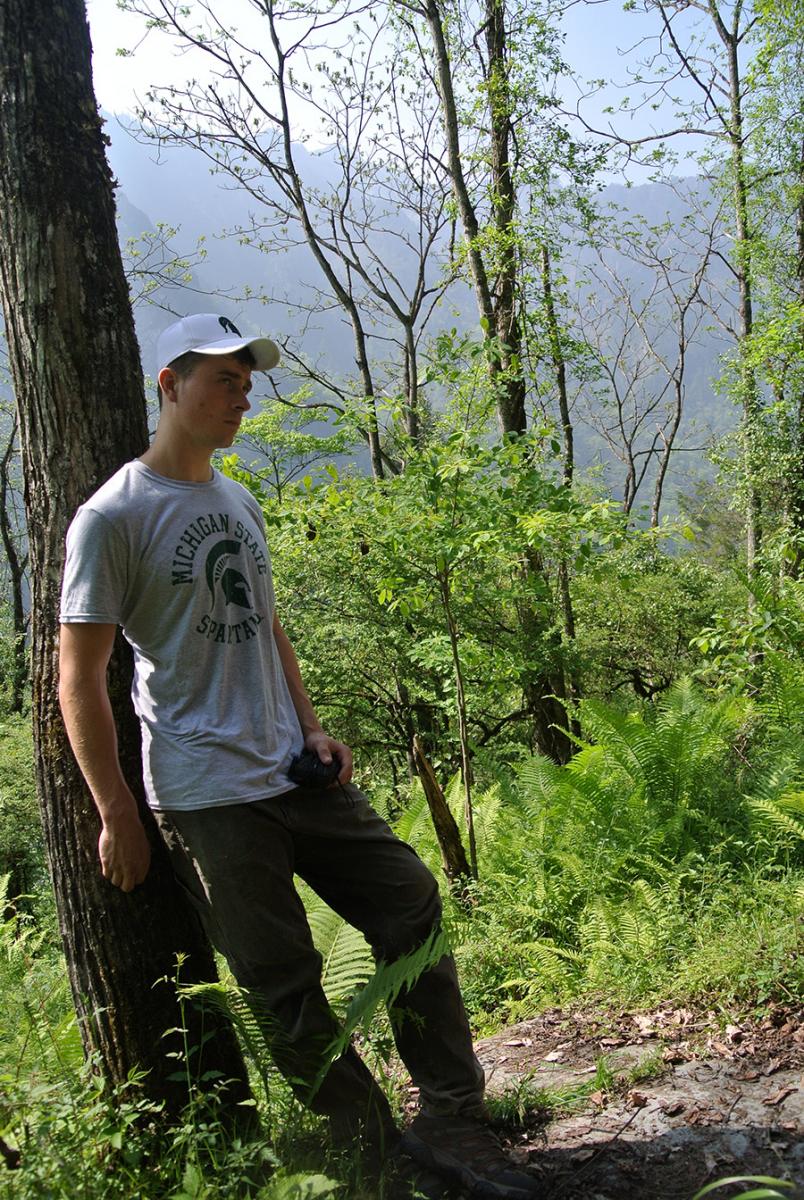The value of a rearview mirror in the field
Add Summary

March 22, 2018
Thomas Connor is a PhD candidate studying with Jack Liu. His fieldwork takes place in and around Wolong, China.
I am writing from Wolong Nature Reserve, near the tail end of a successful winter field season. Although I previously felt that I had had successful seasons in the past, this has been the most so and has put me close to having enough data to finish my dissertation research (assuming, fingers crossed, successful lab work later). Nearing on three years into my PhD, there are a lot of things I know now that I wish I could tell the more naïve 2015 version of myself. Some of these things would have been very difficult to know or appreciate without the accumulative experience of doing my research here, but some of them not. Here are some of the things I’ve learned, with the hope future students starting out research in similar circumstances might benefit.
Although I came into my PhD with a lot of field experience, this had never involved a lot of leadership. Even the jobs I had that involved significant independence and required extensive organizing would still best be described as “grunt” positions, in which the main goals/hypotheses, sampling designs, and analyses were done by others above my pay grade. I also do not have a master’s degree, during which much of this experience can be obtained. My first summer in China, a month and a half after arriving at MSU, would thus probably best be described as a “baptism by fire”. Although plagued by a knee injury, I was able to get into the field on multiple occasions and confirm the feasibility of my genetics project.
 Although that first summer was successful in some ways, and I am using some of the data collected then in my current research, it could have been better. I would have benefited strongly from overlapping with another student or researcher doing fieldwork in China, which I would advise seeking out if at all possible. Simple things like starting with a personal GPS helps immensely in tracking sampling effort and transect routes. It is commonly stated that scientists should start with a hypothesis and develop a sampling design before going into the field. This is all well and good, but without an effective way to implement that design, a project can quickly lose steam. I remember spending a long time with my basic ArcGIS skills attempting to make a sampling grid across my rather ambitious study area. I can now confirm that red lines on a digital elevation map with road and river lines running across it mean very little to local guides. This year, I have a Chinese topographic map with village, mountain, and valley names both on my computer and imported into my GPS that makes navigation to sampling areas a comparative breeze. I also have giant panda locations from both the third and fourth national panda surveys overlaid on this map to get a better idea of likely areas to sample.
Although that first summer was successful in some ways, and I am using some of the data collected then in my current research, it could have been better. I would have benefited strongly from overlapping with another student or researcher doing fieldwork in China, which I would advise seeking out if at all possible. Simple things like starting with a personal GPS helps immensely in tracking sampling effort and transect routes. It is commonly stated that scientists should start with a hypothesis and develop a sampling design before going into the field. This is all well and good, but without an effective way to implement that design, a project can quickly lose steam. I remember spending a long time with my basic ArcGIS skills attempting to make a sampling grid across my rather ambitious study area. I can now confirm that red lines on a digital elevation map with road and river lines running across it mean very little to local guides. This year, I have a Chinese topographic map with village, mountain, and valley names both on my computer and imported into my GPS that makes navigation to sampling areas a comparative breeze. I also have giant panda locations from both the third and fourth national panda surveys overlaid on this map to get a better idea of likely areas to sample.
Finally, I have a much better understanding of Chinese that lets me have at least basic conversations with my guides regarding plans. Again, some of these things could only come with experience working here, but overlapping with a more established field researcher in this area, or hopping in a time machine to speak to my future self, would have benefited me greatly at the beginning of my graduate journey.
I had initially intended to write this post with a pointed and clear list of advice for newer graduate students pursuing fieldwork, but my thoughts arose in a more scattered pattern. Even though I wish I woul



 Print
Print Email
Email









